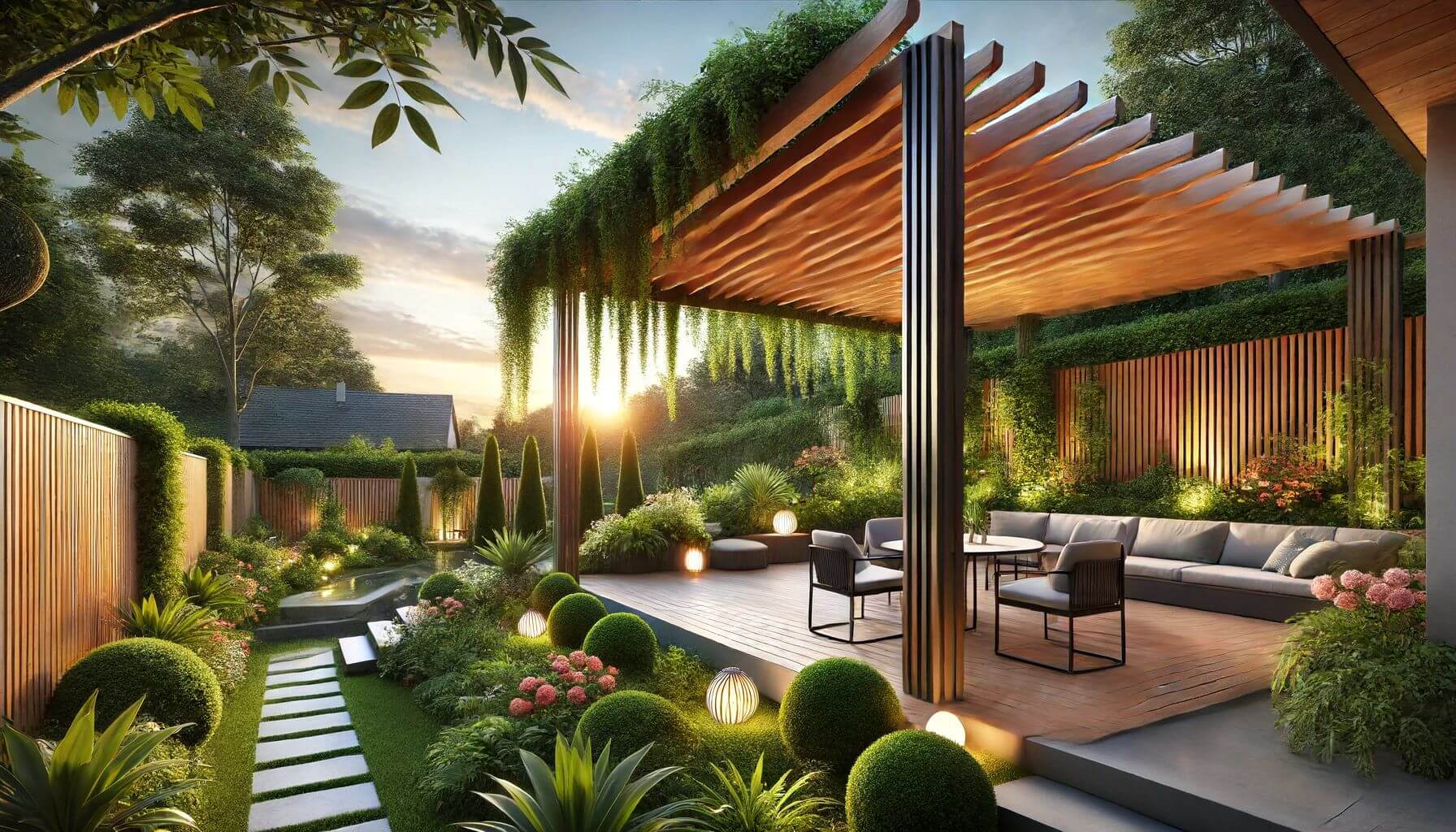
If you have a sloped yard, you might think that a pergola is out of the question. However, with the right design and installation techniques, you can enjoy the beauty and functionality of a pergola even on uneven terrain. In fact, a well-designed pergola can increase your home’s value and provide a stunning focal point for your outdoor space.
Assessing Your Slope
Before you start designing your pergola, it’s important to assess the severity and direction of your yard’s slope. A gentle slope may only require minor adjustments to your pergola design, while a steep slope will need more extensive accommodations.
Consider the direction of the slope as well. A slope that runs parallel to your house may be easier to work with than one that runs perpendicular. This will impact the orientation and placement of your pergola.
Choosing the Right Foundation
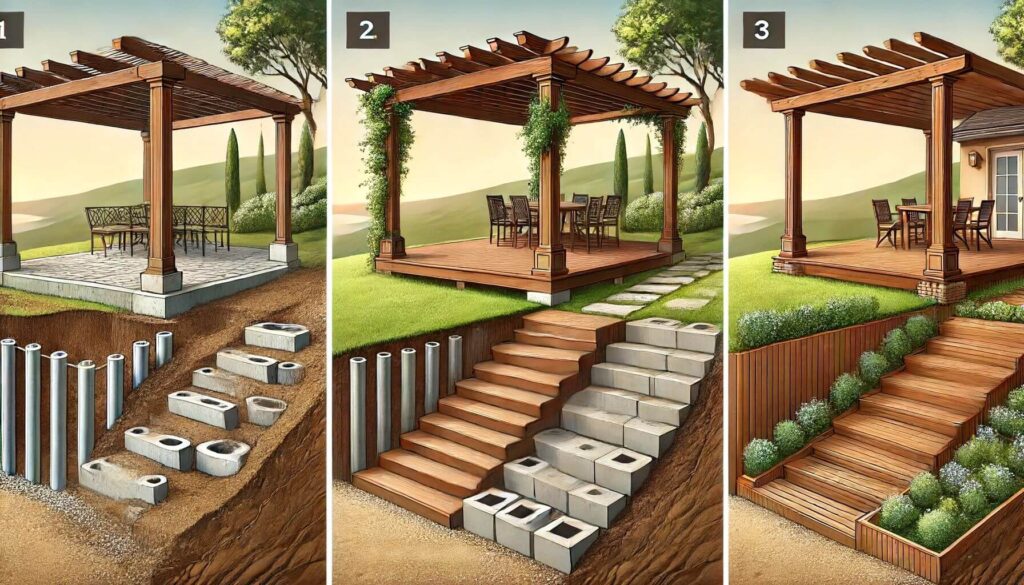
The foundation of your pergola is crucial for its stability and longevity, especially on a sloped yard. There are several options to consider:
- Concrete Footings: For a sturdy, permanent foundation, concrete footings are a great choice. They involve digging holes for each pergola post, filling them with concrete, and anchoring the posts securely. This option works well for moderate slopes.
- Deck Blocks: For a less permanent option, consider using deck blocks as your pergola foundation. These precast concrete blocks sit on the ground and provide a stable base for your posts. They work best for gentle slopes and can be easily removed if needed.
- Terraced Foundations: For steep slopes, a terraced foundation may be necessary. This involves creating level “steps” for each pergola post, either by excavating the high side or building up the low side with retaining walls. This option requires more extensive excavation and construction.
Designing for Drainage
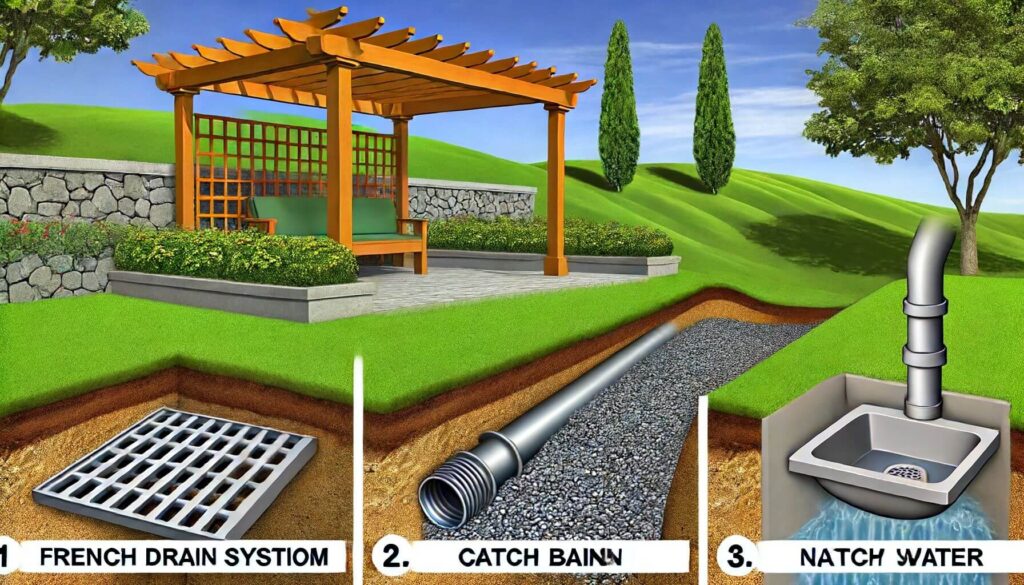
Proper drainage is essential for any outdoor structure, but it’s especially important when building on a slope. Without adequate drainage, water can pool around your pergola posts and cause rot or instability over time.
Consider incorporating French drains, catch basins, or swales into your pergola design to direct water away from the structure. A French drain involves digging a trench filled with gravel and perforated pipe to carry water away, while a catch basin collects water and directs it to an underground drainage system.
Choosing Materials
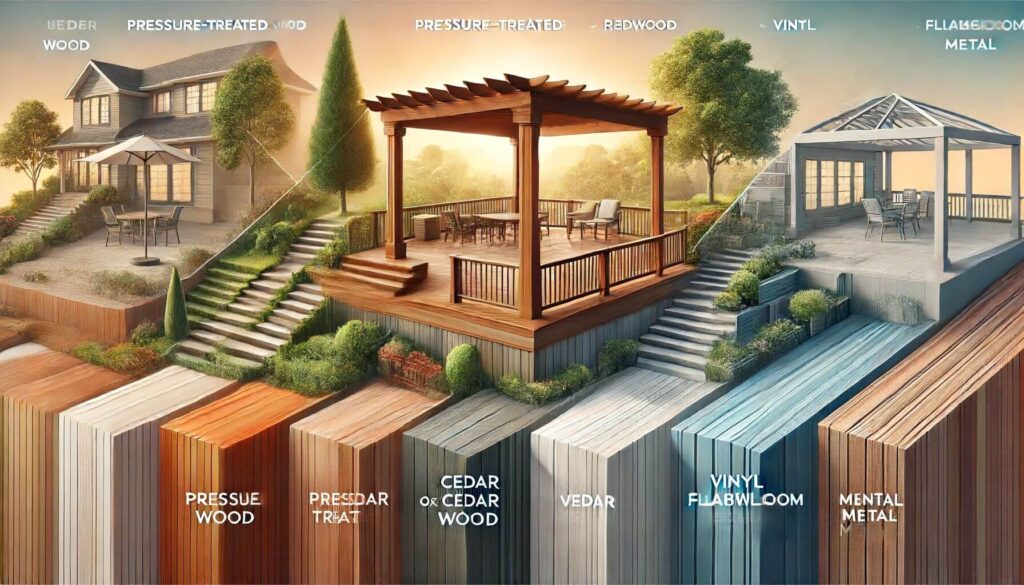
When building a pergola on a slope, it’s important to choose materials that can withstand the added stress and moisture exposure. Here are some options to consider:
- Pressure-Treated Wood: This affordable option is treated to resist rot, decay, and insect damage. It’s a good choice for moderate slopes and can be stained or painted to match your desired aesthetic.
- Cedar or Redwood: These naturally rot-resistant woods are a beautiful and durable choice for pergolas. They’re more expensive than pressure-treated wood but require less maintenance over time.
- Vinyl or Fiberglass: For a low-maintenance option, consider vinyl or fiberglass pergola kits. These materials are lightweight, durable, and resistant to moisture and insect damage. They work well for gentle to moderate slopes.
- Metal: For a sleek, modern look, a metal pergola can be a striking choice. Aluminum or steel options are durable and can withstand the added stress of a sloped yard. However, they may require professional installation.
Incorporating Retaining Walls

If your slope is particularly steep or you want to create a level surface for your pergola, consider incorporating retaining walls into your design. Retaining walls can help to stabilize the soil, prevent erosion, and create level terraces for your pergola and other landscaping features.
There are many materials to choose from for your retaining walls, including concrete blocks, natural stone, or timber. Choose a material that complements your pergola design and overall landscape aesthetic.
Creating Visual Interest
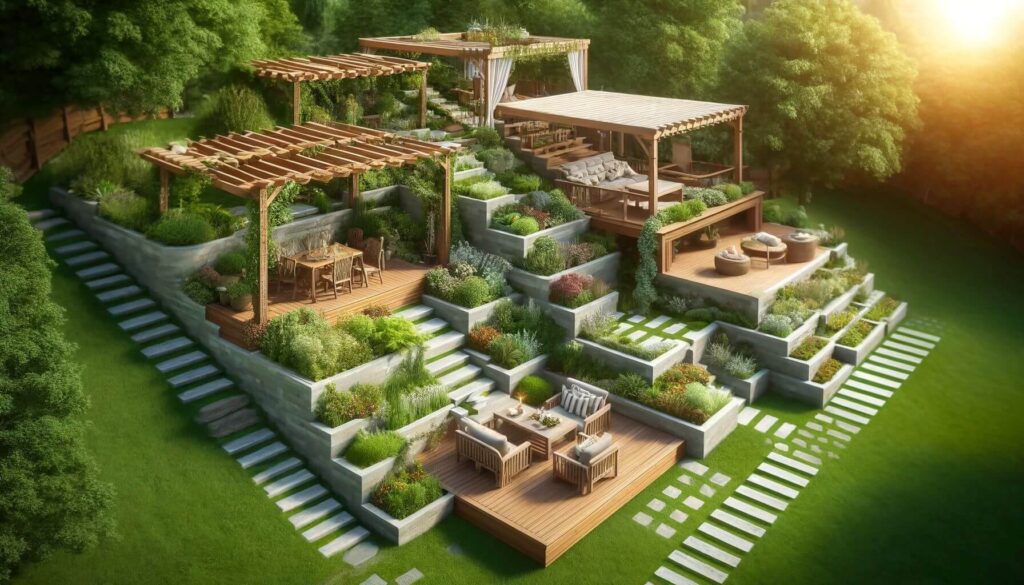
A sloped yard can provide unique opportunities to create visual interest with your pergola design. Consider incorporating different levels or tiers to your pergola to work with the natural grade of your yard.
For example, you could create a multi-level pergola with a lower seating area and a higher platform for a dining table or outdoor kitchen. Or, you could build a series of smaller pergolas at different heights to create a terraced effect.
Landscaping and Lighting
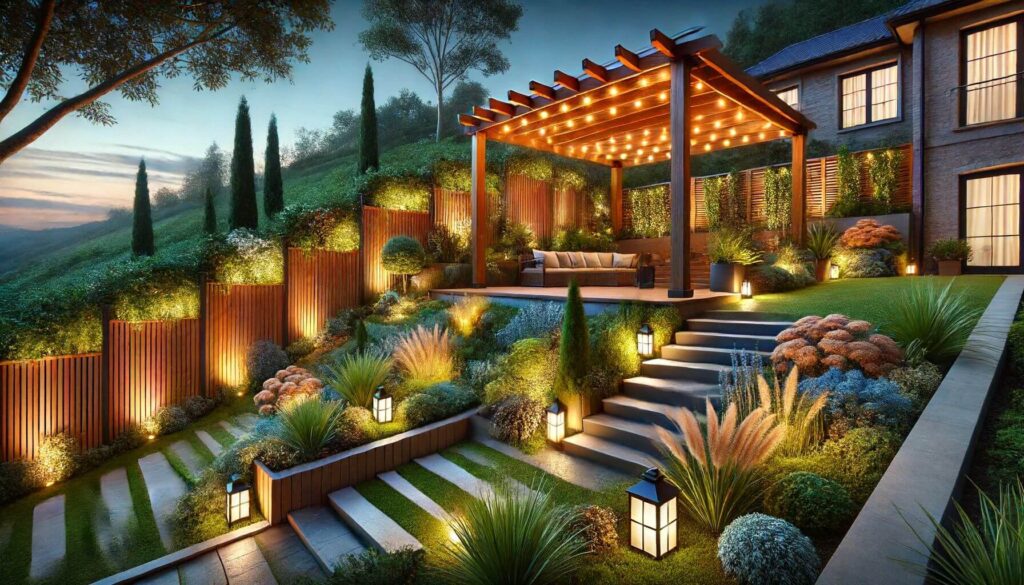
Thoughtful landscaping and lighting can help to highlight your pergola and integrate it seamlessly into your sloped yard. Consider plants that thrive on slopes, such as groundcovers, shrubs, and ornamental grasses, to help stabilize the soil and add texture and color.
Incorporate lighting into your pergola design to create a warm, inviting ambiance and extend the usability of your outdoor space into the evening hours. String lights, lanterns, or downlights can be hung from the rafters or posts to provide soft, ambient lighting.
Accessibility and Safety
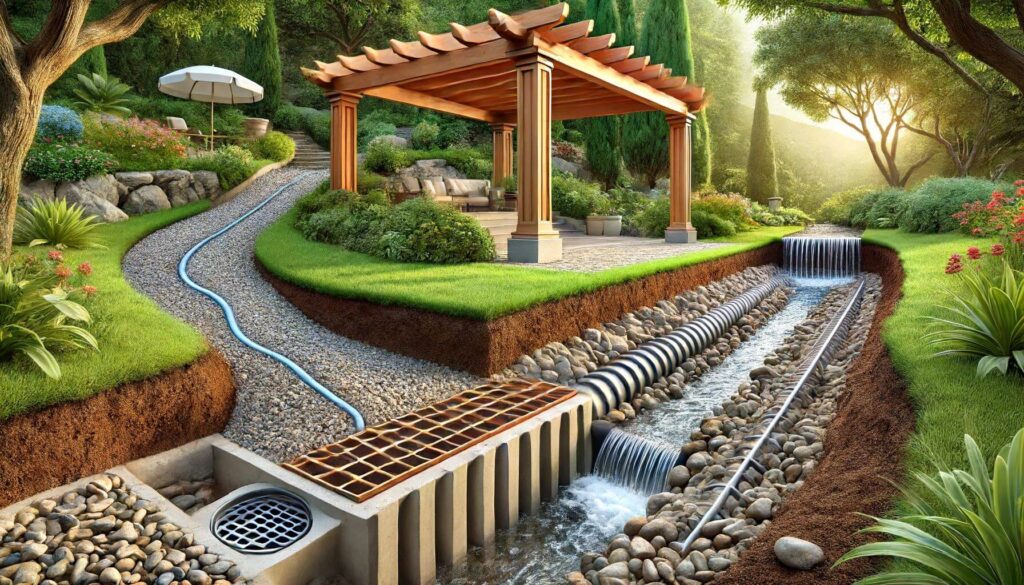
When building a pergola on a slope, it’s important to prioritize accessibility and safety. Consider the placement of stairs, ramps, or paths to ensure that your pergola is easily accessible from your home and other parts of your yard.
Ensure that any stairs or walkways have proper handrails and are built to code. If your pergola is elevated, you may need to install railings or balusters to prevent falls.
Working with Professionals
Building a pergola on a sloped yard can be a complex project that requires careful planning and execution. While experienced DIYers may be able to tackle the project with the right tools and knowledge, most homeowners will benefit from working with professional contractors, structural engineers, and landscape designers.
Look for professionals with experience building structures on sloped terrain and a portfolio of successful projects. They can help you navigate the unique challenges of your site and ensure that your pergola is built to last.
Enjoying Your Sloped Yard Pergola
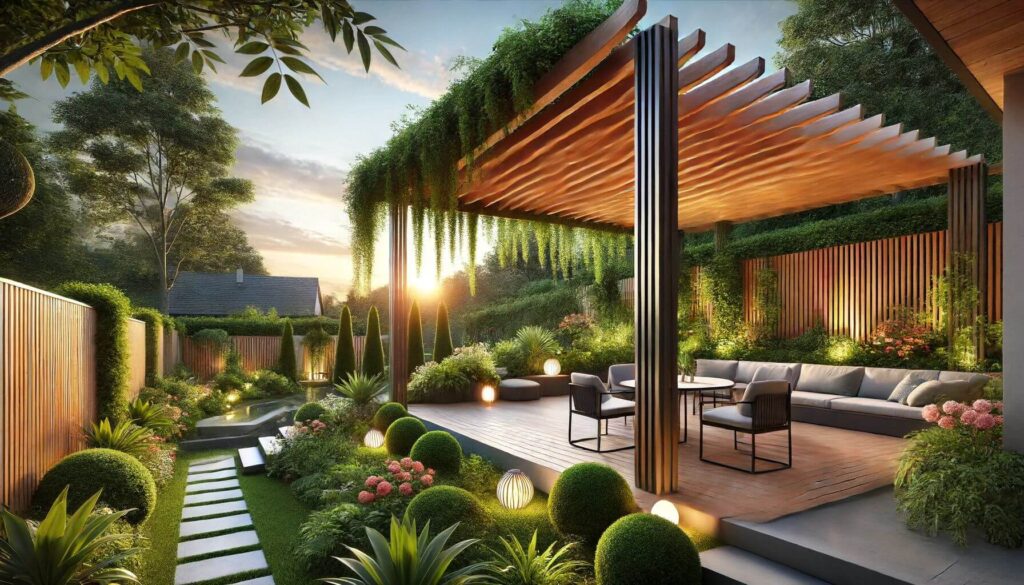
With the right design, materials, and installation techniques, a pergola can be a stunning and functional addition to your sloped yard. Whether you choose a modern metal structure or a rustic wooden design, your pergola can provide shade, shelter, and a beautiful focal point for your outdoor gatherings.
To get the most out of your sloped yard pergola, consider adding comfortable seating, outdoor dining areas, or even a fireplace or fire pit for cozy evenings. With a little creativity and planning, your sloped yard can become a beautiful and inviting outdoor oasis.



